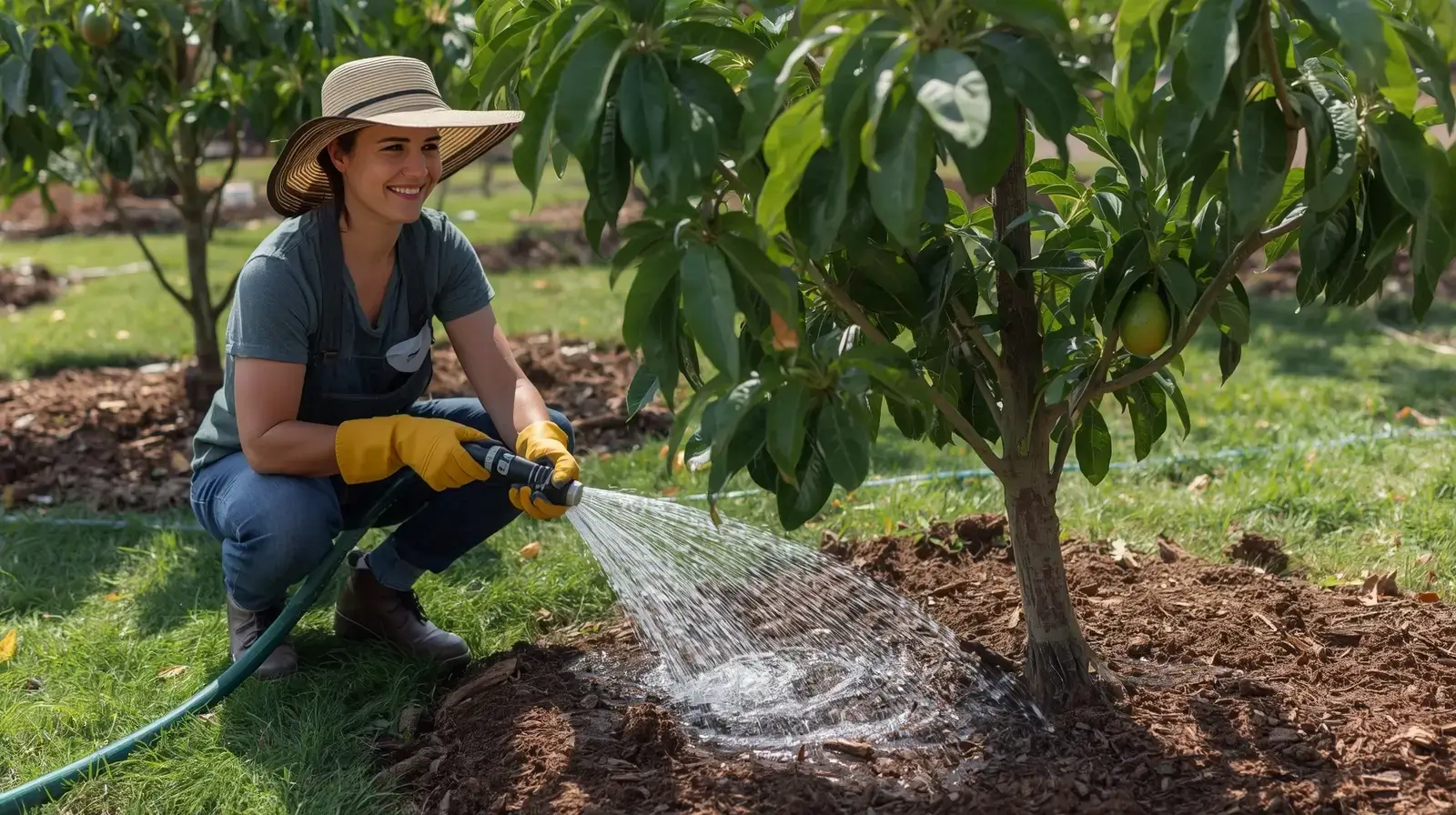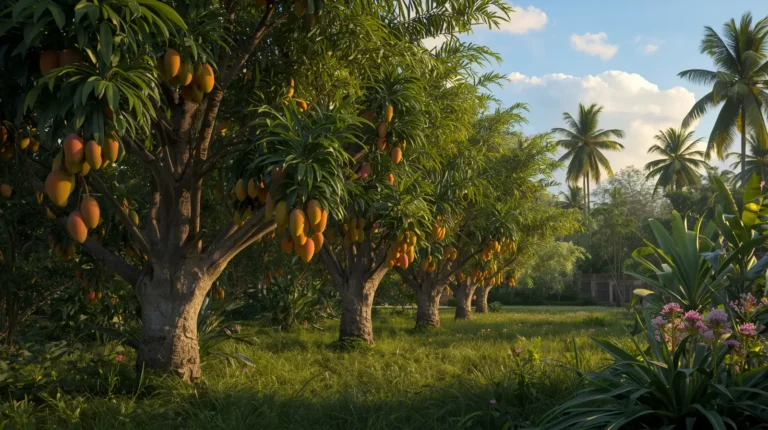When I first started growing a mexicola grande avocado tree in my garden, I was amazed at how quickly it turned a simple space into a lush oasis filled with vibrant greenery and the promise of delicious fruit. To help your mexicola grande avocado tree thrive, make sure you understand the specific conditions they need, especially sunlight, soil, and watering balance. As an aspiring gardener, you may face challenges along this journey, but with thoughtful planting, steady maintaining, and gentle troubleshooting of common issues, you can cultivate flourishing trees and look forward to a bountiful harvest of Mexicola Grande avocado, truly empowering readers like us who enjoy learning and growing together.
If you enjoy growing compact fruit trees, you may also love exploring dwarf avocado trees for small-space gardening solutions.
1. Understand the Growing Conditions for Mexicola Grande Avocado Trees
Growing a Mexicola Grande avocado tree starts with learning how to cultivate it in specific growing conditions that support optimal health and strong productivity. In my own backyard, I found that rich soil, especially loamy soil and well-draining soil, makes a noticeable difference. The soil should have a slightly acidic pH or neutral pH, ideally pH 5 to 7, because dense clay soil can cause root decay. If the ground is heavy, building a mound with sand, compost, and fine mulch helps improve drainage and encourages healthy root development.
Sunlight also plays a key role. These trees prefer full sun and direct sunlight, needing around 6 to 8 hours sunlight daily to flourish and yield more fruit. I once read advice from Les Engels, an arboretum curator, who highlighted how proper exposure ensures optimal growth and better fruit production, ultimately supporting the plant’s health. In terms of climate, this tree’s cold hardiness allows it to handle temperatures as low as 20°F, but it truly thrives in USDA hardiness zones 8 to 11, where warm conditions and humid conditions create an ideal environment.
For climate and regional care guidance, the University of Florida IFAS avocado guide offers reliable growing recommendations for home orchard growers.
Watering should be approached with balance. Consistent watering is important, particularly during the initial weeks after planting, when the moist top 2 inches soil should be watched carefully. You want to avoid overwatering to prevent root rot, while keeping the tree hydrated. Mature plants often need about 2 inches water per week, which helps them stay not waterlogged while still supported in an ideal setting that encourages flourishing and leads to an abundant harvest.
2. Plant the Mexicola Grande Avocado Tree Properly

To plant a Mexicola Grande avocado tree, follow these essential steps carefully as part of your gardening journey. These instructions help you supporting plant establishment while setting realistic expectations for healthy development.
- Choose the right location in a sunny area with well-draining soil, and avoid stagnant water or dense clay as these can impede plant growth.
- Prepare the planting hole by digging a hole twice as wide and deep as the ball of the tree so the roots spread and establish effectively.
- Amend the earth by mixing sand and compost to improve drainage and create slightly acidic ground with a pH level 6.0 to 6.5.
- Plant the sapling in the middle of the hole, keeping the top of the ball of roots level with the surrounding earth, then fill the hole with modified earth, gently tamping to eliminate air pockets.
- Water thoroughly with deep watering to settle the soil, and shape a watering basin to retain moisture for healthy growth, especially in areas with 1000-1300 mm of rainfall annually.
- Apply mulch, specifically a 3-inch layer of mulch, positioned a few inches away from the trunk to prevent rot, maintain soil moisture, and help with controlling weeds.
- Remember the growth timeline: grafted fruit-bearing plants may begin producing in three to four years, which forms part of your realistic expectations on this gardening journey.
3. Maintain and Care for Your Mexicola Grande Avocado Tree

Caring for a Mexicola Grande avocado tree helps it thrives and produces abundantly when you follow essential care guidelines that support healthy growth.
- Practice consistent watering for young plants, starting with water every 2-3 days in the first week, then reduce to twice a week during subsequent months, shifting to a weekly watering routine once the tree is established, ensuring the upper 2 inches of soil remain damp.
- In warmer regions, adjust and water up to 220 liters of water each day in summer to adjust schedule and maintain moisture.
- Use a fertilization routine applying balanced fertilizer 10-10-10 three times a year in spring and fall to supply essential nutrients, support growth, enhance fruit production, and meet specific nitrogen requirements and potassium requirements, as noted by agricultural experts through monitoring soil nutrient levels to customize fertilization and improve impact yield.
- Perform annual pruning with pruning techniques and proper training techniques to improve adequate air circulation, removing dead branches, removing crossing branches, shaping the plant to a manageable size, and encourage lateral growth for optimizing plant structure.
With ongoing pest management, inspect plant regularly for common pests like mites and thrips, use organic pest management techniques to protect plant, preserving beneficial insects, and ensure early detection to prevent considerable damage and ensure plant health so it flourishes and yields delightful fruit for years to come.
Many gardeners compare it with the little cado avocado taste, as both varieties offer rich flavor even in smaller tree sizes.
4. Troubleshoot Common Issues in Growing Mexicola Grande Avocado Trees
Caring for a Mexicola Grande avocado tree involves understanding challenges and responding to common issues quickly to maintain a productive tree.
- If you notice leaf browning or brown leaves, check for underwatering or over-fertilization, assess soil moisture levels, adjust watering schedule, and reduce fertilizer when needed.
- Root rot, especially Phytophthora root rot, can occur from excessive watering or poor drainage, so use well-draining soil, modify watering practices, prevent waterlogging, and apply effective irrigation management to avoid excessive moisture and rapid decline in plant health.
- Watch for pest infestations by maintaining vigilance for pests like aphids and spider mites, and apply insecticidal soap or neem oil to eliminate pests while preserving beneficial insects and monitoring diseases and other disease-promoting conditions.
- If you experience poor fruit production, the plant may be failing to yield fruit due to inadequate sunlight or insufficient pollination, so ensure ample sunlight and plant a flowering Type B fruit nearby to enhance pollination and boost fruit set.

Read Also:
- Gardening & Plant Care Guide for Thriving Plants 🌿
- Tropical Fruit Trees: Grow Exotic Paradise at Home
- Natural Healing & Wellness: Nature’s Remedies Guide
Conclusion
Growing a Mexicola Grande avocado tree becomes a rewarding experience when you understand its needs from the start—proper planting, steady care, and quick problem-solving. By giving the tree well-draining soil, enough sunlight, balanced watering, and regular monitoring for pests and diseases, you support healthy growth and long-term fruit production. With patience and consistency, your tree can flourish beautifully and provide delicious fruit for many years.
FAQs
- How long does it take for a Mexicola Grande avocado tree to produce fruit?
Grafted Mexicola Grande avocado trees typically begin producing fruit in 3 to 4 years, while seed-grown trees may take longer. - What type of soil is best for this avocado tree?
A well-draining, loamy soil with a slightly acidic to neutral pH is ideal. Avoid heavy clay soils that retain too much moisture. - How often should I water my Mexicola Grande avocado tree?
Water young trees every few days during early establishment and gradually transition to weekly watering, ensuring the top soil remains lightly moist—not soggy. - What causes leaf browning on avocado trees?
Leaf browning often results from underwatering, over-fertilization, or salt buildup in soil. Check moisture levels and adjust your routine as necessary. - How can I improve pollination for better fruit production?
Planting a Type B avocado variety nearby helps increase cross-pollination, improving fruit set and yield.




